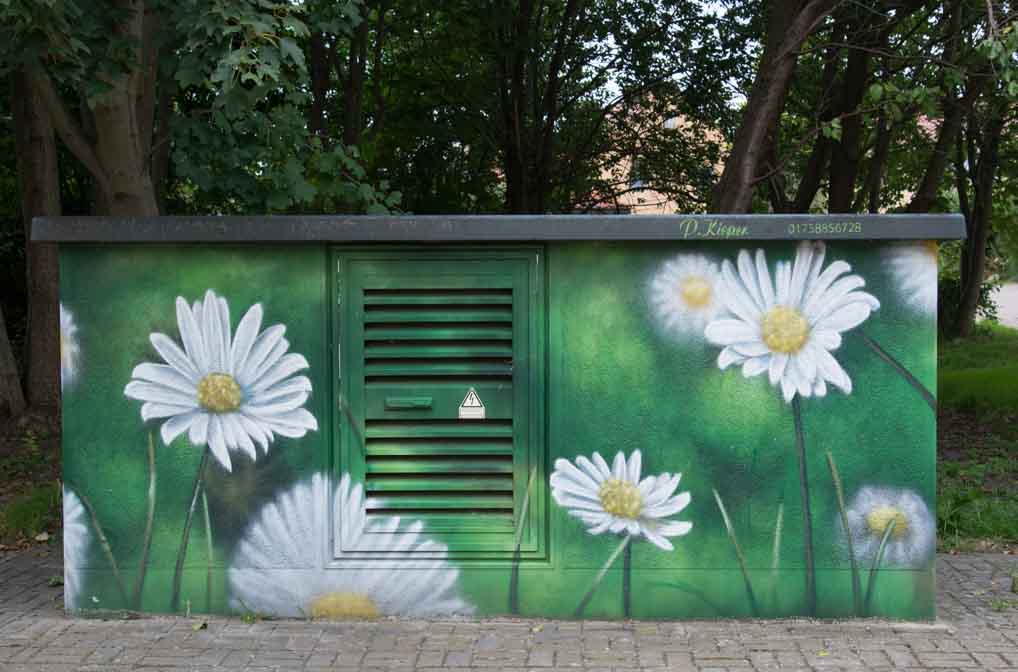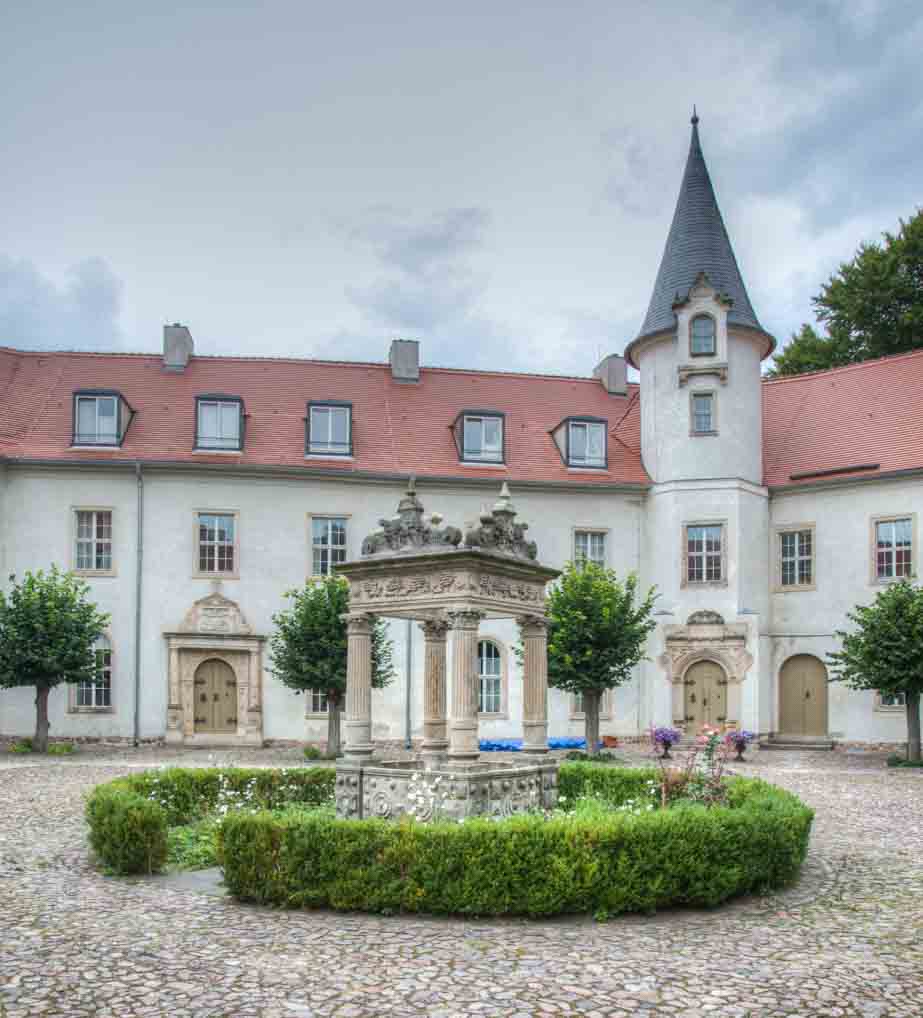Team Basil were up bright and early(ish) to ensure we got to Wittenberg well before lunch. The roads today were a slight improvement but there were still stretches where there were more patches than original road.
Sarah has spotted that many utility buildings relating to electricity, gas or even public toilets have been given an artistic makeover. We’ve seen flowers, red squirrels and more today on sub-stations and the like. It’s a nice idea but presumably too expensive to be adopted in the UK.

Substation or some such
Another feature of this part of Germany are the tree lined avenues. This is a little like parts of France, except the trees are planted not just along straight sections of the highway but also where it is twisty. Each tree has a neat little label giving it a unique number, presumably so any tree needing work can be easily identified. Sitting alongside every stretch of trees is a signpost giving a graphic warning for cars not to collide with a tree. Basil and I have no intention of crashing into a tree, but every time I see the “do not crash into a tree” sign, it makes me extra cautious, so I suppose the sign is doing its job.
I mentioned previously that the speeds on German motorways can be breathtakingly fast, given the lack of limits on some sections. The roads in the countryside are the opposite. Many rural lanes, even if they are broad and straight, have a 70 kph (43 mph) speed limit.
As we proceeded smoothly with our journey, SatNav piped up with a customary warning “traffic jam ahead” which he says with his most obsequious voice. We get this warning regularly, because SatNav receives live traffic information. This time it said we could expect a delay of four minutes.
We carried on for several miles, joining a fast moving Autobahn. A roadside sign told traffic to merge into one lane, but there was no sign of cars slowing and we started to joke with each other that SatNav had got it wrong again. It turned out he had, but not in a good way. Soon enough hazard warning lights ahead told us that the Autobahn was slowing to a halt.
We queued for innumerable kilometres, in stop start traffic, for about 45 minutes, with no sign of improvement, when SatNav piped up and offered us an alternative route at the next exit. Glad to be moving again, or so I thought, I took SatNav up on his kind offer and pulled off the Autobahn, only to find that the police were now stopping all traffic joining the autobahn and us stuck in another jam.
After more stop start traffic we finally seemed to be clear of the knock on consequences of the autobahn closure, but by then it was 13.45 and we were still miles from Wittenberg. We pulled into a LIDL to carry out the shop that had been planned for later in the day and had lunch. When we set off from the campsite we were due to reach Wittenberg by midday. By the time we had finished lunch SatNav was telling us it would be after 15.30 by the time we arrived.
The decision was made to postpone Wittenberg until tomorrow and we diverted to a nearby Stellplatz in a small town called Wiesenburg. The Stellplatz was supposed to be close to a castle, but I did not hold out much hope, but at least it was labelled as free.

Wiesenberg Castle
When we arrived the Stellplatz (52.110779, 12.446817) was a modern little parking area next to the parkland of a small castle cum palace. The nearby main road makes it slightly noisy but I suspect it will be fine as night draws in.

Castle entrance
Sarah, the dogs and I went for an hour or so walk in the, much better than expected, castle grounds and had a wander about the small town centre. The castle itself appears to have been converted into, what seem to be, very grand apartments. There were plenty of signs about the town on the history of the castle and the town, but they were all in German, far too advanced for me to translate. I have looked on line and can find nothing about the castle’s origins.

The apartments inside the castle
We are now only 18 miles from Wittenberg, so with luck we should be able to get there tomorrow, or at least before the end of the 500th anniversary of Martin Luther’s 95 theses in four months time!

Distressed wall and window in Wiensburg
